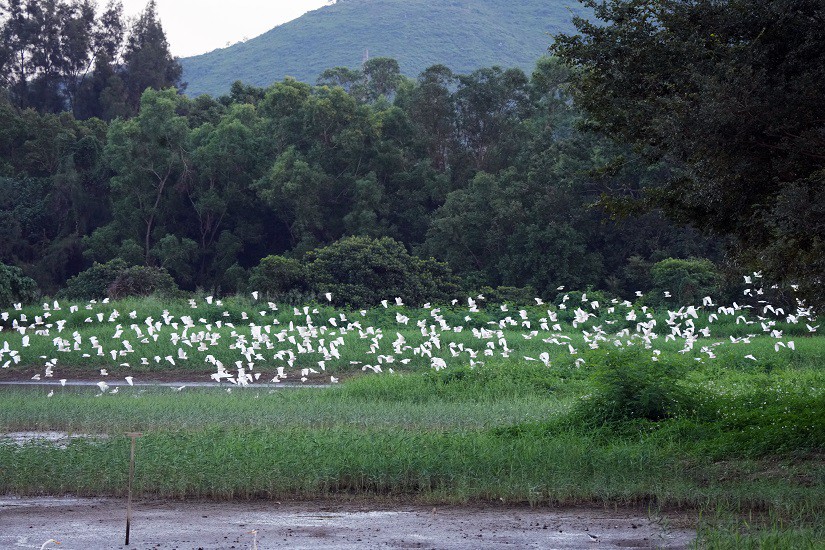
Being the first infrastructure built on a mitigated wetland in Hong Kong, continuous ecological monitoring is very important to ensure the recreated habitats and facilities can meet the needs of wildlife. Through collecting and analysing information about the diversity, distribution and behaviour of wildlife in the Park, we could further enhance the habitat management measures accordingly.
According to our ecological monitoring records, the cumulative number of bird species recorded at the Wetland Reserve has reached 299 as of 2024, made up approximately 50% of all local bird species recorded. In addition to birds, a variety of other species were also recorded at the Wetland Reserve, especially the wetland indicators - dragonflies, amphibians and reptiles with the cumulative number of species of 60, 12 and 37 respectively. Besides, we planted a huge diversity of butterfly larval food plants and nectar plants at the Wetland Reserve; the cumulative number of butterfly species recorded was 189.
Birds
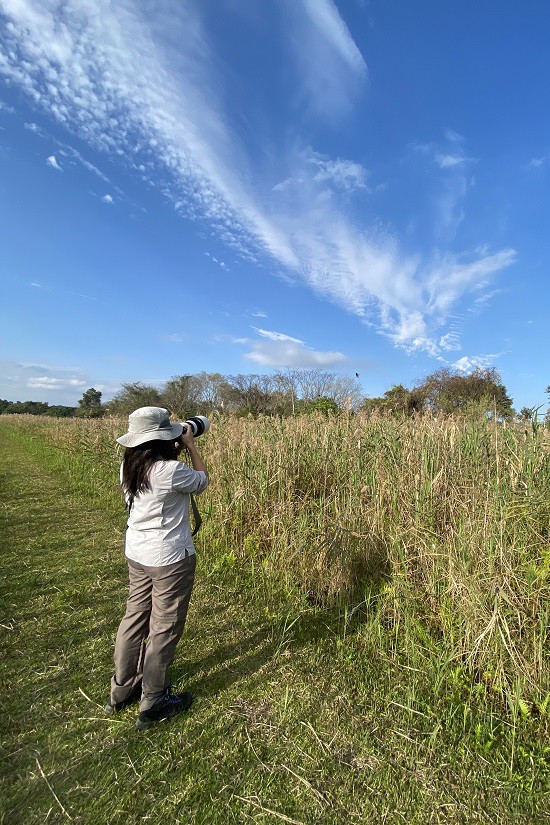 |
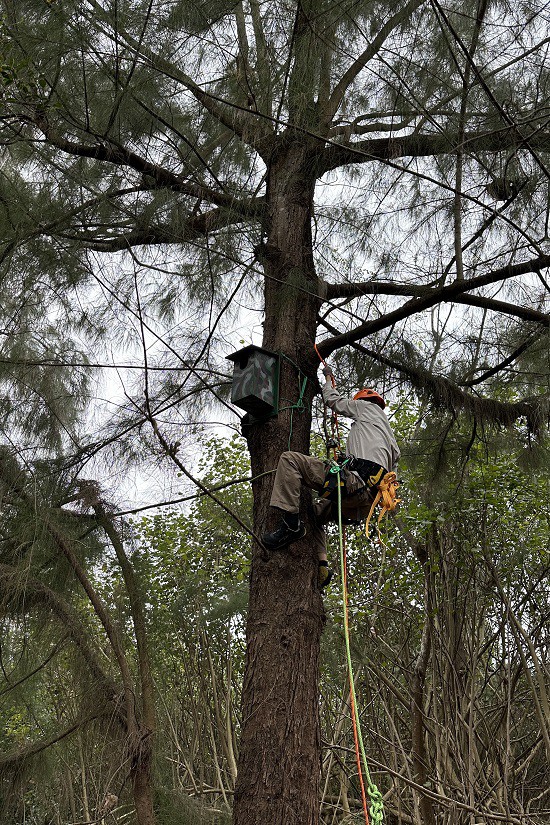 |
Birds
Bird surveys are conducted along fixed routes, with species and abundance of birds recorded at designated observation points by sighting and hearing of bird calls. Artificial nest boxes have also been installed to attract bird nesting and the occupants are regularly monitored.
Moreover, we continuously take part in the International Black-faced Spoonbill Census, where black-faced spoonbills in the Park are counted on designated days every year to facilitate estimation of their global population size.
Amphibians and Reptiles
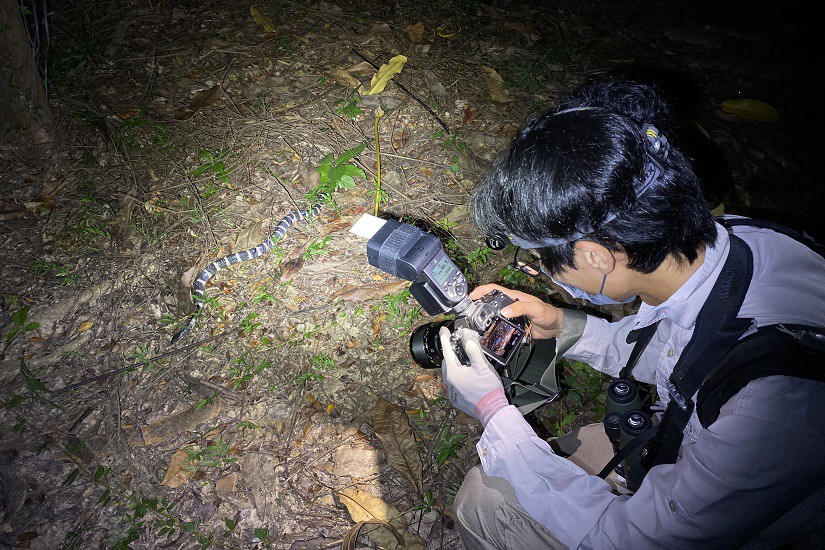
Amphibians and Reptiles
While most amphibians are more active after dusk, reptiles are used to hide in shaded environments such as ditches, crevices below logs and amongst the fallen leaves. Various observation techniques are therefore required when conducting amphibian and reptile surveys. Apart from direct observation along designated routes, identifying the ‘calls’ of amphibians and active searching for reptiles are other useful methods.
Freshwater Fishes
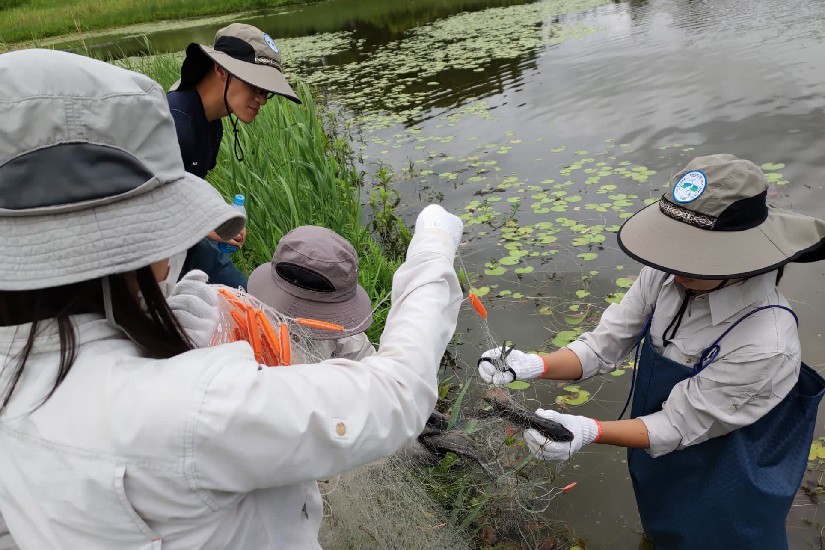
Freshwater Fishes
The annual freshwater fish survey is never an easy task, not only due to the huge size of freshwater marshes but also the varying habits of different fish species (e.g. living in different water depths). Apart from nearshore observation, we also need to catch the fish with gill nets, pot traps and hand nets for recording.
Mammals
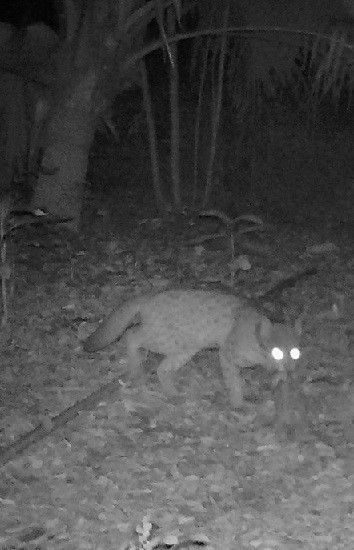 |
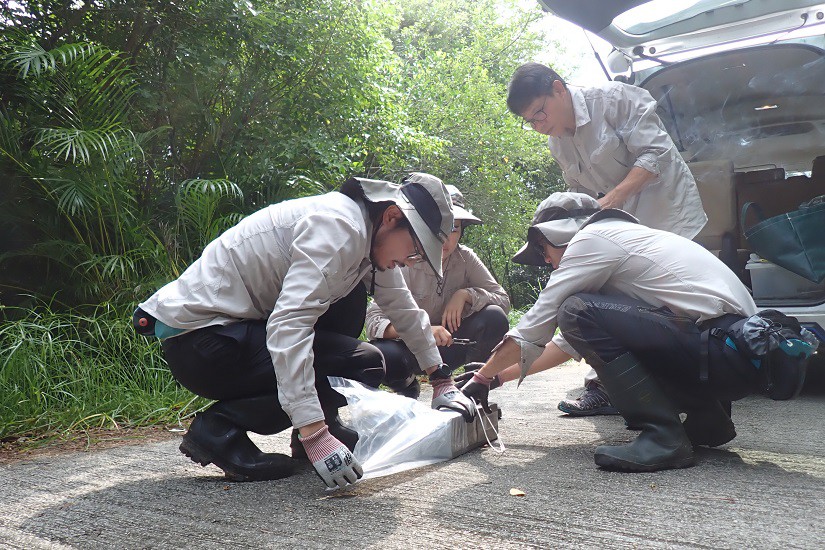 |
Mammals
Several infrared-triggered cameras have been installed in the Park to record the occurrence of mammals, especially the nocturnal species. The cameras take photos automatically when 'warm-blooded' animals get into the detection zone. Besides, we regularly set up traps with baits for capturing small mammals like rats and the caught animals will be released back to the wild immediately after identification.
Insects
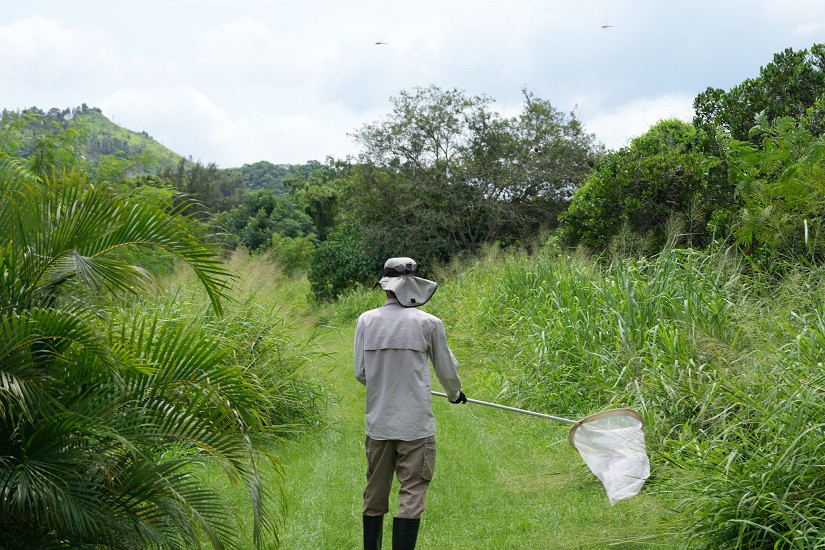
Insects
The occurrences of dragonflies, butterflies and fireflies are often temperature- and weather-dependent, making the insect surveys seasonal tasks. Insect surveys are conducted along fixed routes and with the aid of binoculars, which dragonflies and butterflies are counted in daytime and fireflies are counted in nighttime. We also capture insects that are difficult to be identified in flight with a hand net, which will be released upon identification.
Aquatic Plants
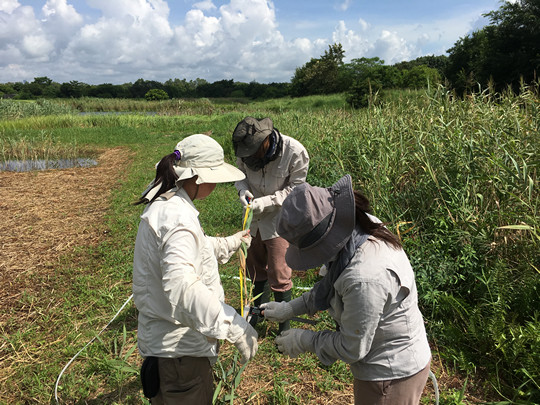
Aquatic Plants
Surveys on aquatic plants are conducted annually. We lay transects along the bank of freshwater marshes to record the health conditions, species diversity and community structure of the plants. In addition, quadrats are randomly placed in the reedbed and the growth conditions of reeds sampled by the quadrats are recorded.
Water Quality
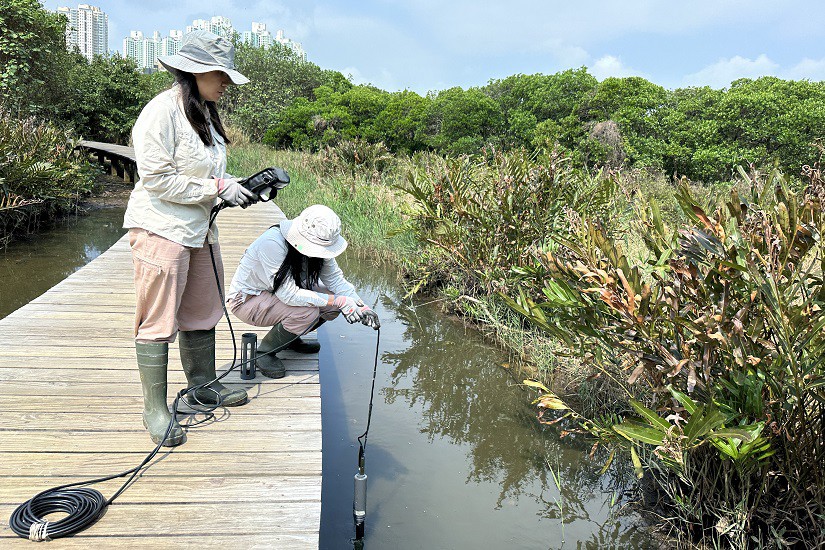
Water Quality
Water quality monitoring is performed regularly for the freshwater marshes and other water bodies. Basic parameters including water temperature, turbidity, salinity, pH and dissolved oxygen are measured. The monitoring data are mainly used for assessing the water quality of the reconstructed wetlands and the filtering efficiency of the reedbeds, to ensure the Park remains suitable for wildlife to inhabit.
-
Ballantyne, L., Fu, X.H., Shih, C.H., Cheng, C.Y. and Yiu, V. 2011. Pteroptyx maipo Ballantyne, a new species of bent-winged firefly (Coleoptera: Lampyridae) from Hong Kong, and its relevance to firefly biology and conservation. Zootaxa 2931:8-34.
-
Chan, C.S.M. 2006. Preliminary Results of Bat-box Trial Project in the Hong Kong Wetland Park. Hong Kong Biodiversity 13:13-14. Download
-
Cheng, J.C.Y., Shih, R.C.H. and Cheung, K.H. 2010. First Record in China of the Firefly Genus Pteroptyx (齊爍螢屬). Hong Kong Biodiversity 19:1-3. Download
-
Cheng, N.M. and Yau, P.T. 2016. A Report on the Butterfly Monitoring Programme of the Hong Kong Wetland Park (2003-2015). Hong Kong Biodiversity 24:1-10. Download
-
Cheung K.L. 2006. Colonization of Macrobenthic Community in a Man-made Mudflat. Proceedings of the 6th International Symposium on Ecosystem Behaviour BIOGEOMON 2009:328.
-
Cheung, K.L., Liu, C.C., Xu, W.Z., Chueng, S.G. and Shin, P.K.S. 2008. Macrobenthic communities in a sub-tropical man-made mudflat. Marine Pollution Bulletin 55:1226-1230.
-
Fang, L., Wong, P.K., Li, L., Lan, C.Y. and Qiu, J.W. 2010. Impact of invasive apple snails in Hong Kong on wetland macrophytes, nutrients, phytoplankton and filamentous algae. Freshwater Biology 55(6):1191-1204.
-
Hong Kong Wetland Park. 2018. Bird Ringing Programme in HKWP. HKWP Newsletter 31:6-7. Download
-
Hong Kong Wetland Park Reserve Section. 2010. Breeding Record of Black-winged Stilt (Himantopus himantopus, 黑翅長腳鷸), in Hong Kong Wetland Park. Hong Kong Biodiversity 18:9-12. Download
-
Lai, D.Y.F. and Lam, K.C. 2009. Phosphorus sorption by sediments in a subtropical constructed wetland receiving stormwater runoff. Ecological Engineering 35:735-743.
-
Qiu, J.W. 2008. Species identification, ecology and biological control of apple snails (Pomacea spp.) in Hong Kong. The First Wetland Link International – Asia Symposium.
-
Tse, W.L. and Pang, C.C. 2019. Bird Ringing Programme at Hong Kong Wetland Park 2017 – 2019 Summary Report (March 2017 to February 2019). Hong Kong Bird Watching Society, Hong Kong. Download
-
Wong, M.S.M. 2007. Growth of Freshwater Emergents Under Different Submergence Levels. Chinese University of Hong Kong, Hong Kong.
-
Yip, J.Y. 2006. A Note on the Use of Nest Boxes by Owls and other Birds in the Hong Kong Wetland Park. Hong Kong Biodiversity 13:15-16. Download